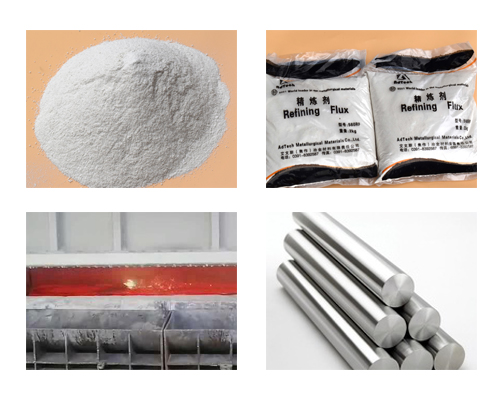In order to further control the content and size of inclusions and eliminate the harmful effects of large-particle inclusions, most of the aluminum melt purification technology is used in the melt treatment process of electrolytic aluminum liquid. Through the number of holes per unit area of the filter, the purpose of removing non-metallic inclusions is achieved.
The nitrogen blowing flux method is one of aluminum melt purification technology, it has the characteristics of both inert gas refining and flux refining, and it can give full play to the advantages of inert gas and flux refining.
When nitrogen is sprayed into the aluminum liquid, a large number of nitrogen bubbles are generated. On the contact surface of the bubble and the molten aluminum, due to the pressure difference between the inside of the bubble and the gas [H] in the molten aluminum, hydrogen diffuses into the bubble according to the law of partial pressure. When the nitrogen bubbles rise to the surface of the melt, the hydrogen is brought into the air or furnace gas to achieve the purpose of degassing.
Flux slag removal is mainly achieved by adsorption, dissolution and chemical combination with the oxide film and non-metallic inclusions in the aluminum melt. The molten flux has low surface tension at the interface between the inclusions and the aluminum melt, which can wet and adsorb the inclusions, increase the speed at which the inclusions rise or settle, and bring them to the surface of the melt to be removed. The molten solvent attached to the surface of the bubble reduces the surface tension of the bubble, and the gas and inclusions in the aluminum melt are more likely to enter the bubble. Moreover, the flux blown into the deep part of the molten aluminum quickly disperses, the fine flux particles are evenly distributed, and the contact area with the molten aluminum is greatly increased, achieving maximum full contact and full reaction, and improving the effective utilization rate of the flux.

